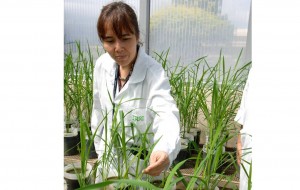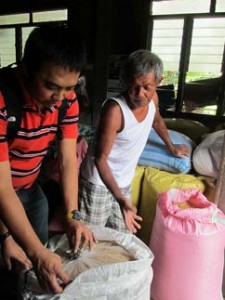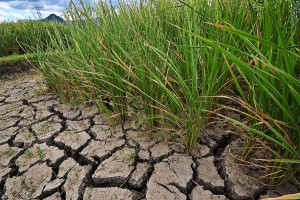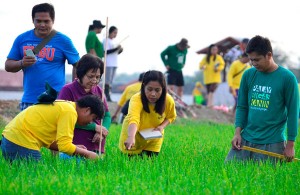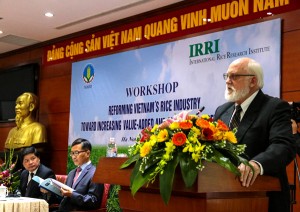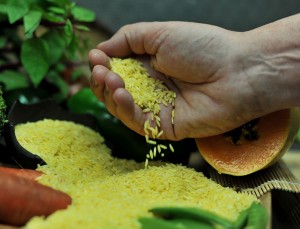The International Rice Research Institute (IRRI) and the Philippine Department of Agriculture (DA) are assessing the extent of the damage wrought by Typhoon Haiyan (local name Yolanda) on rice production in the affected region of the Philippines.
“The current rice crop in the affected regions accounts for less than 10% of the Philippines’ annual national rice production, and most of the rice crop in these regions had already been harvested before the typhoon came,” said Samarendu Mohanty, IRRI economist and head of the Institute’s social science and policy arm.
Dr. Mohanty, however, added that it will take a little more time to determine the full extent of the damage.
Leyte, the province that bore the full brunt of the typhoon, is a Category II rice–producing province, meaning it has more than 100,000 hectares of rice land. Between 2000 and 2009, Leyte posted the third biggest increase in rice production among all provinces, behind Nueva Ecija and Iloilo, and has the highest average annual growth rate in terms of yield per hectare output.
Coming from an assessment meeting with the Department of Agriculture today, IRRI Deputy Director General for Communication and Partnership V. Bruce J. Tolentino said that Typhoon Haiyan (Yolanda) struck in the period between planting seasons in Leyte. Most farms had already completed their wet season harvest and were just starting to prepare for the dry season crop.
“The most serious issues will arise from extensive losses resulting from the storm surge—in farm machinery, storage, housing, and damage to roads and irrigation. These will need replacement and rehabilitation,” said Dr. Tolentino. “In the meantime, access to markets is constrained and household food stocks are down to zero, causing a spike in local food prices.”
IRRI Director General Robert Zeigler expressed his condolences to those affected by the typhoon. “In all of my years in the Philippines, since 1992, I have never seen devastation of this scale. Like many of you, I am deeply saddened by the great loss of life and massive destruction caused by this typhoon.”
As climate change continues to add to challenges for rice production, Filipino farmers respond by planting climate change-ready rice varieties developed by IRRI and released by the Philippine government. About five million farmers across Asia are now using `scuba’ or flood-tolerant rice, which can withstand submergence for up to two weeks. IRRI has released 101 improved rice varieties in the Philippines that includes ‘scuba rice,’ known by its local variety name, “Submarino”.
As part of its response to help people affected by the typhoon, IRRI, with the DA, will provide seeds of flood-tolerant rice to farmers.
IRRI continues to work on making rice more resistant to extreme weather conditions. This includes studying how rice can thrive despite salty soil, hot or cold weather, and drought.
IRRI staff and friends are also putting together donations of money and supplies for the people affected by the typhoon.


